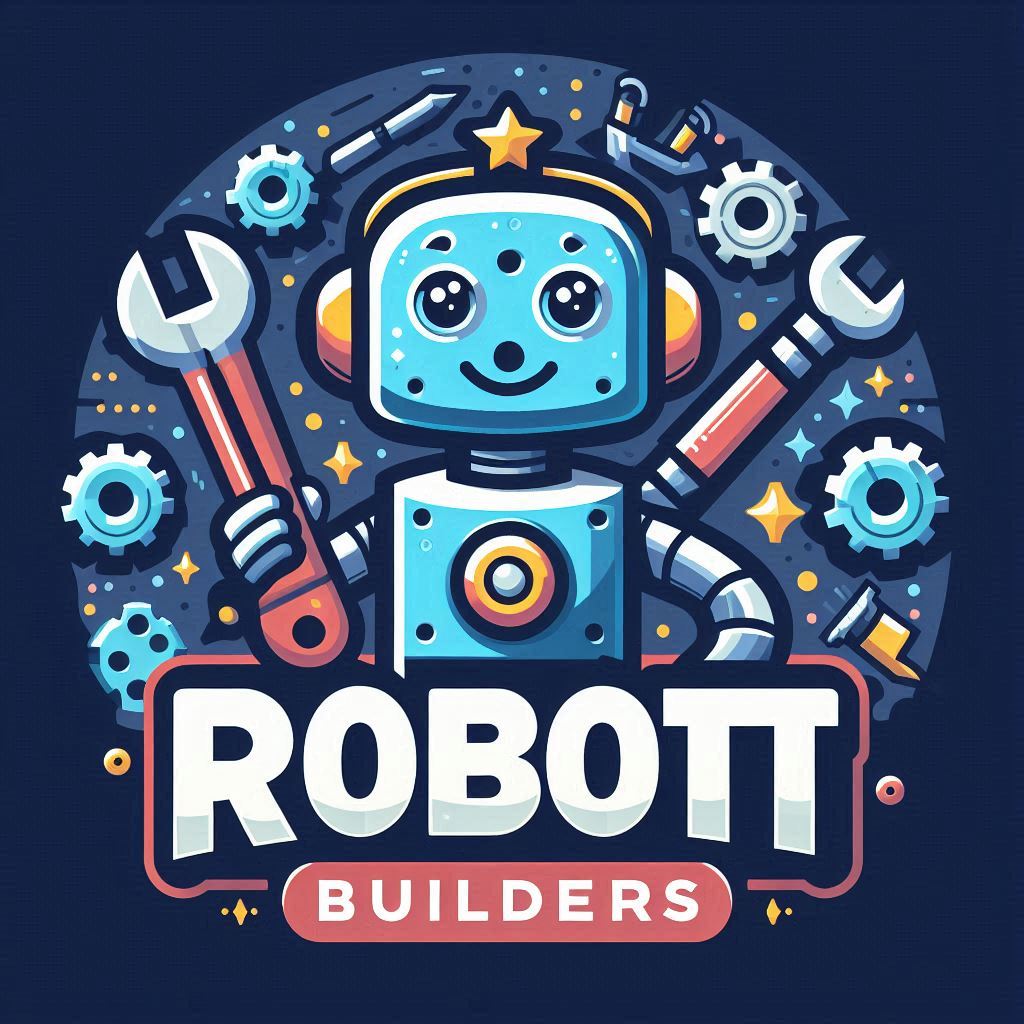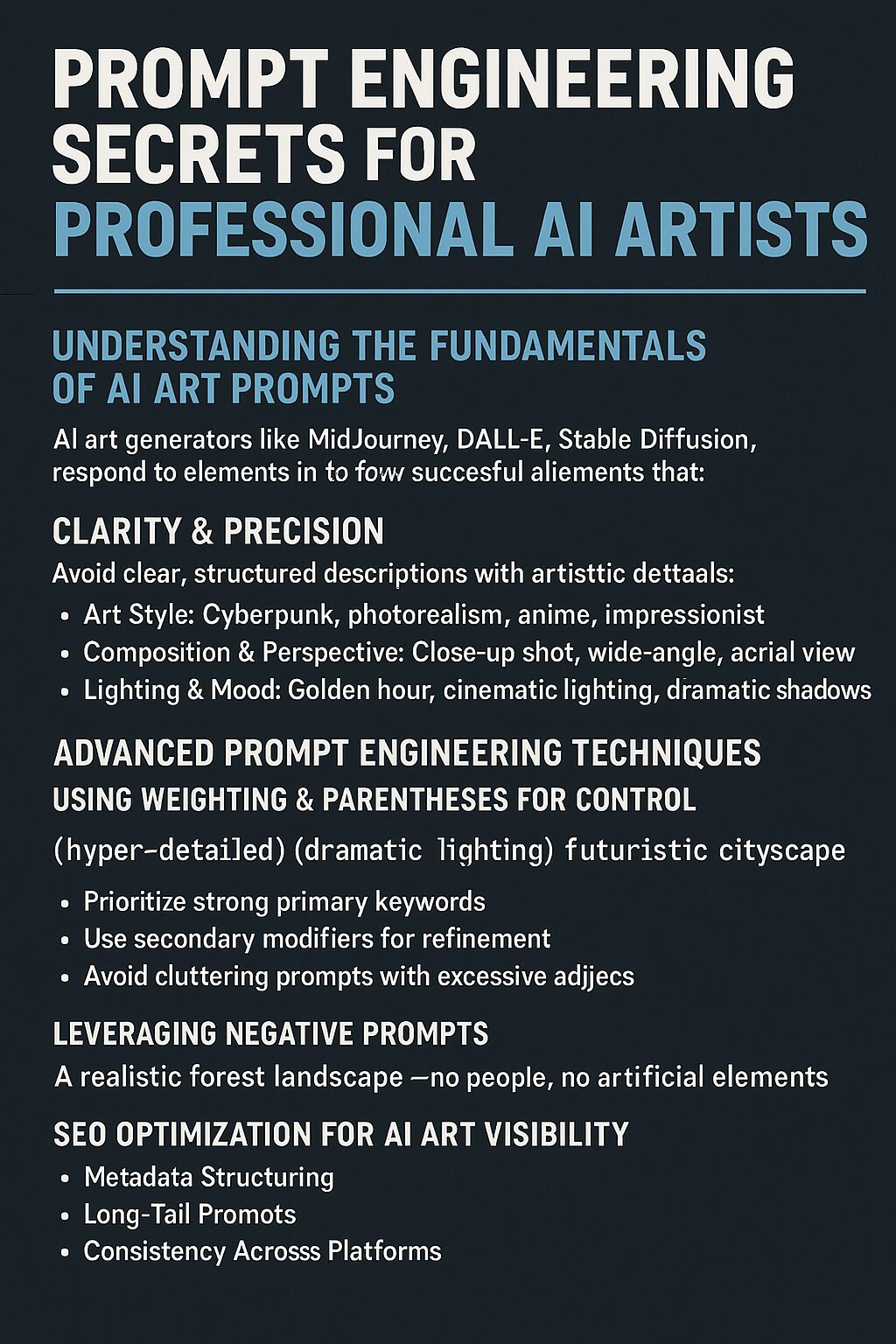Introduction
AI-driven art has evolved into a sophisticated tool for creatives, enabling stunning visual compositions across various styles and genres. However, the key to unlocking AI’s full potential lies in prompt engineering—crafting structured and strategic inputs that guide AI models to produce high-quality results. This article explores professional secrets that will elevate your prompt-writing skills, ensuring precision, creativity, and SEO optimization for AI-generated visuals.
Understanding the Fundamentals of AI Art Prompts
AI art generators like MidJourney, DALL·E, and Stable Diffusion respond to descriptive prompts by producing images aligned with user instructions. Successful AI artists employ the following elements in their prompts:
1. Clarity & Precision
Vague prompts generate inconsistent results. Instead, provide clear, structured descriptions with specific artistic details such as:
- Art Style: Cyberpunk, photorealism, anime, impressionist
- Composition & Perspective: Close-up shot, wide-angle, aerial view
- Lighting & Mood: Golden hour, cinematic lighting, dramatic shadows
2. Keyword Optimization for AI Art
Since AI models interpret prompts in a hierarchical manner, keyword placement impacts output quality.
- Prioritize strong primary keywords (e.g., “highly detailed cyberpunk cityscape”).
- Use secondary modifiers for refinement (e.g., “neon reflections, misty atmosphere”).
- Avoid cluttering prompts with excessive adjectives, which may lead to diluted results.
Advanced Prompt Engineering Techniques
3. Using Weighting & Parentheses for Control
Some AI art models allow weighted prompts using parentheses or colons:
- “(hyper-detailed) (dramatic lighting) futuristic cityscape” → Enhances image detail.
- “Portrait of a warrior::2, misty background::0.5” → Gives more emphasis to the warrior while reducing background dominance.
4. Leveraging Negative Prompts
Negative prompts exclude unwanted elements to refine AI-generated images. Example:
- “A realistic forest landscape –no people, no artificial elements” → Ensures only natural scenery is depicted. This technique is essential for achieving clean and professional outputs without distractions.
5. SEO Optimization for AI Art Visibility
Professional AI artists often integrate SEO principles into their prompts to boost content discoverability:
- Metadata Structuring: Use highly relevant keywords in titles, captions, and alt tags.
- Long-Tail Prompts: Detailed phrases optimize search rankings (e.g., “Hyper-realistic digital painting of a cyberpunk street with neon reflections”).
- Consistency Across Platforms: Implement uniform terminology in artwork descriptions to improve visibility on Google Images, Pinterest, and Behance.
Conclusion
Mastering prompt engineering is essential for professional AI artists seeking to create high-quality, SEO-optimized digital art. By applying structured keyword strategies, refining input clarity, and leveraging advanced techniques like weighting and negative prompts, creatives can elevate their work and maximize AI capabilities.
For expert-level AI artistry, always experiment, iterate, and refine prompts to push creative boundaries further.

